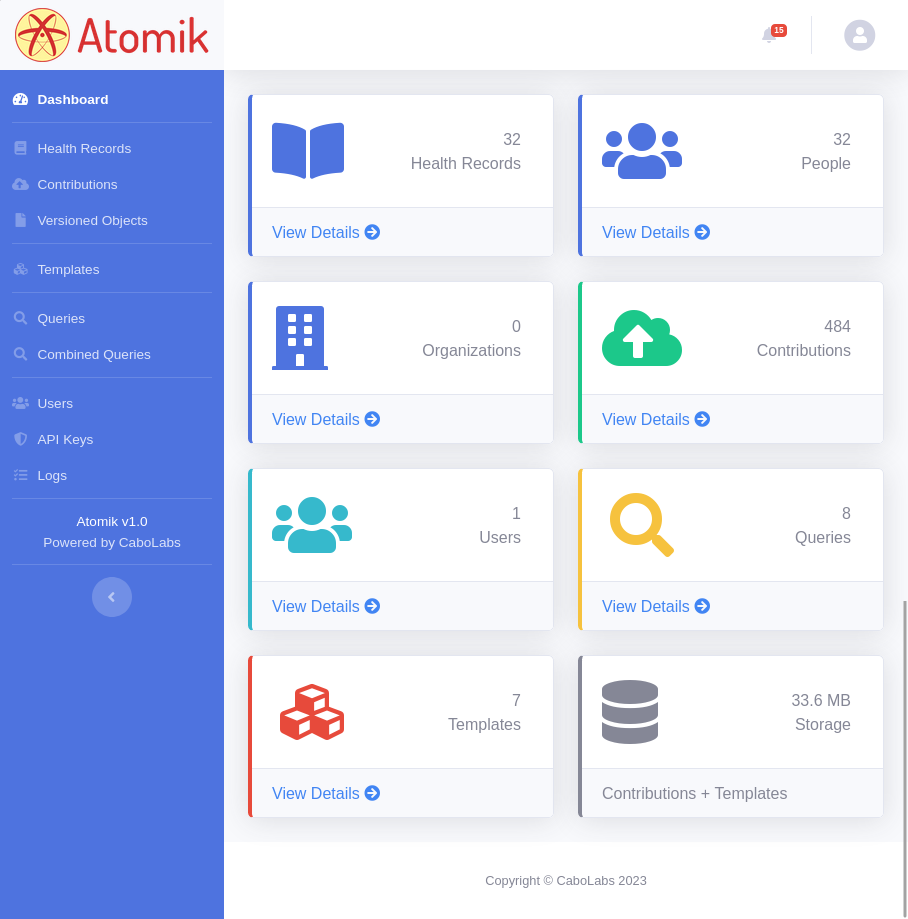Web console
Atomik's web console is a very intuitive user interface for administrators to manage, configure, audit and test different aspects of Atomik, including: users, clusters, EHRs, demographics, contributions, folders, compositions, templates, queries and logs.
Main dashboard
In the main dashboard you will find general information about the current status of the server, with counts of different entities like EHRs, templates and queries, alongside with the current storage status.

Health records
In this section you can manage EHRs of patients that were created via the REST API.
Each EHR has a unique identifier, a creation time stamp, contains an EHR_STATUS that has a reference to the patient associated with the EHR.
An EHR also contains a directory, which is a folder structure that allows to organize health documents, a list of contributions that are all the changes since to that EHR, and a list of compositions, which is how openEHR represents clinical documents.
Contributions
This section allows to review all the modifications done for all the EHRs in the system.
Each contribution can contain several documents that are committed at the same time to an EHR, for different operations, one document could be created, another modified, another deleted, all via the same contribution.
Versioned objects
This section allows to review reach openEHR object created in the system. These objects could be compositions (clinical documents), EHR status, folders or demographic actors (person, organization, etc), and are all versionable.
Each versioned objects has a list of versions, the first version being the one that represents the creation of such object.
This help following a certain object through its lifecycle, including all its associated audit logs.
Templates
This section allows to manage all the operational templates that will be used in the system. In openEHR all objects have to comply with a template, so before you want to load Abby openEHR object into Atomik, you need to load the corresponding template.
Templates can also be versioned, since documents and other object structures could change in the future. New versions of the same template could be loaded, maintaining the previous versions. That allows to query old data without problems, and commit new data with the newest version of each template.
Queries
This section allows to manage stored queries and to create new ones by using Atomik's visual Query Builder.
The Query Builder allow to create queries of many types, mainly based on the object type you need in the result, so that's composition, folder, EHR status, actor (person, organization, group, etc), or party relationships. Another type of query is data value, which allows to retrieve individual values from different object types.
Clusters
This section allows to manage server configurations and API keys for the Sync API. These configurations enable the synchronization of data between different instances of Atomik servers.
API keys
This section allows to manage API keys that enable access to the openEHR API at the level of systems or apps. These are used when individual user login is not possible, for instance when the client system uses an external identity provider instead of Atomik to manage user data (credentials, permissions, etc).